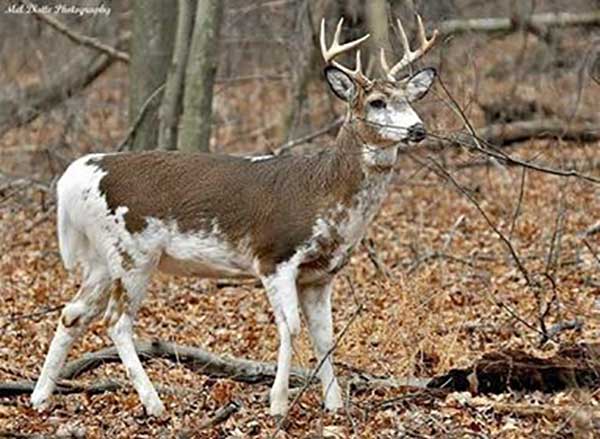By Louie Stout
 Rare Deer Causes a Stir
Rare Deer Causes a Stir
One day last August, Rhonda Cravens six-year-old son came running out of the woods behind her house where he had been playing on his four-wheeler.
“Mom! Mom! There is a big ‘bear wasp’ chasing me!” he yelled in a panic.
Rhonda chuckled. She knows how six year olds’ imaginations get carried away.
The boy seemed emphatic about something he saw, so she decided to investigate. To her surprise, there stood odd colored deer beyond the tree line and it came after her as well.
The deer caused no harm and faded back into the brush when she moved back into her yard.
“My son thought it was a bear and had never seen a deer with antlers, but knew what a wasp was,” she said. “I guess that’s what made him combine the two.”
Antlerless deer often frequent the Cravens’ yard in Berrien County near Niles, but not bucks with nice racks.
Nor had she seen one with the coloration of the “bear wasp” that sent her youngster into a panic. The strange looking nine-point buck is brown and white, similar to a pinto pony.
The deer had a brown back and cape but also wore a white face, hindquarters and legs with brown blotches.
“I had never seen anything like it,” said Cravens.
She managed to snap a photo on another occasion and sent the picture to Michigan Deer Biologist Chad Stewart.
The biologist identified the buck as a piebald deer, a whitetail deer with a rare genetic condition.
“Many piebald deer are born with other conditions or deformities that can affect their survival, including malformed spine or legs,” wrote Stewart. “This particular deer appears to be extremely healthy and unaffected by his condition, indicating that it is not experiencing any negative impact.”
Piebalds are extremely rare but are seen occasionally in Indiana and Michigan.
The Cravens piebald buck is elusive, although it has been spotted on occasion munching on acorns near the house late last fall. It spends most of its time hanging around honeysuckle bushes farther back in the woods.
“The other does and fawns living back there come into the yard and eat our shrubs, and during Halloween they ate our pumpkins,” joked Cravens, who hopes hunters will leave the rare buck alone. “I don’t mind. I’ll live with it because they’re cool to see.”